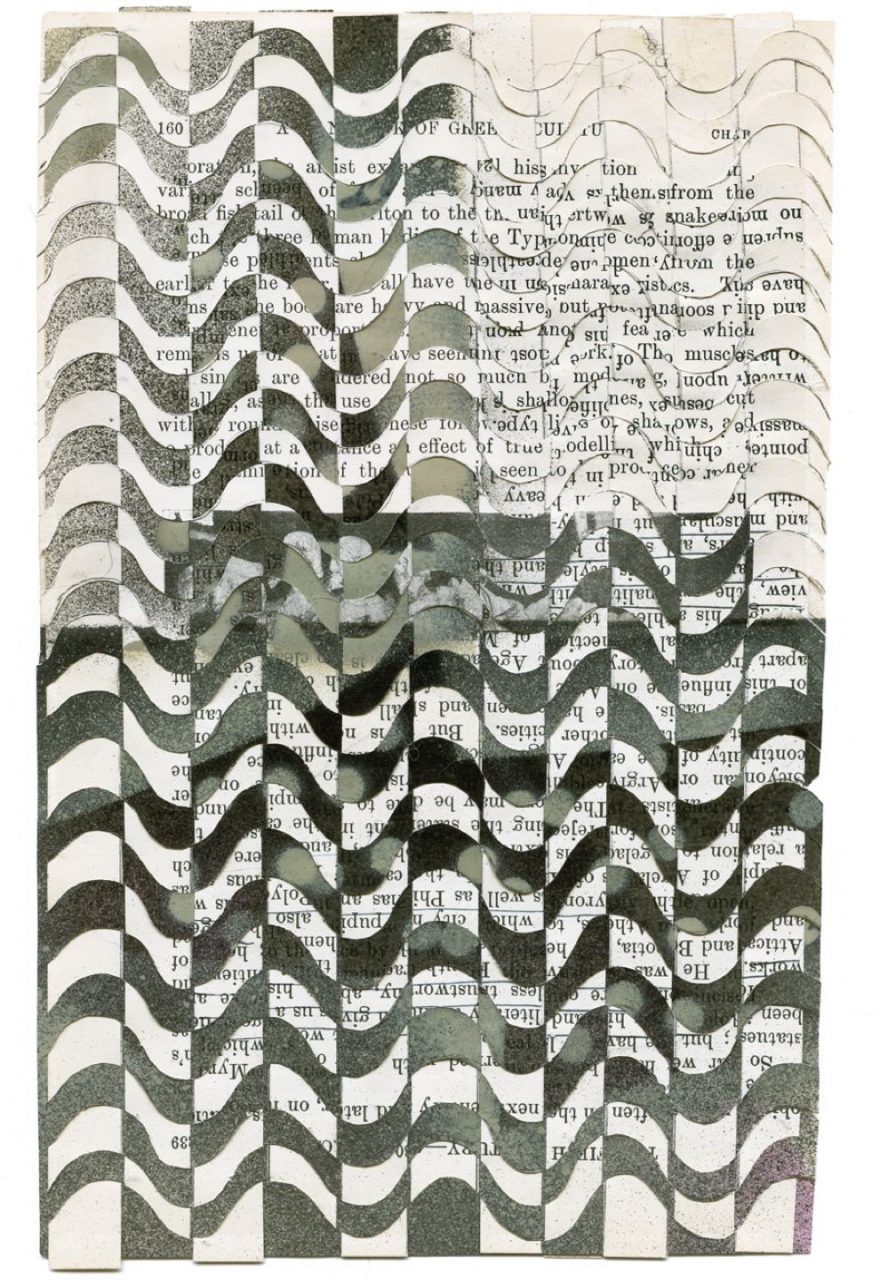Inherited and Borrowed Types
January 21 - February 27, 2011
Ruby Sky Stiler
-

Installation view, Inherited and Borrowed Types, 2011
-

Installation view, Inherited and Borrowed Types, 2011
-

Installation view, Inherited and Borrowed Types, 2011
-

Figure from Parts, Past and Present, 2010
Foam, acrylic resin, thermal adhesive
66 1/2 x 27 1/2 x 13 inches -

Nude from Parts (Fig.1), 2010
Foam, acrylic resin, thermal adhesive
66 1/2 x 31 x 13 inches -

Nude from Parts (Fig.2), 2010
Foam, acrylic resin, thermal adhesive
66 x 26 x 13 inches -

Nude from Parts (Fig.3), 2010
Foam, acrylic resin, thermal adhesive
67x 26 x 9 inches -

Untitled 11, 2010
Woven book pages, spray paint
7 1/2 x 5 inches -

Untitled 16, 2010
Woven book pages, spray paint
7 1/2 x 5 inches -

Untitled 15, 2010
Woven book pages, spray paint
7 1/2 x 5 inches -

Untitled 7, 2010
Woven book pages, spray paint
7 1/2 x 5 inches -

Untitled 9, 2010
Woven book pages, spray paint
7 1/2 x 5 inches
Press Release
A Reading
When artists deface or otherwise alter a published book, it can posit a conflict between book learning and hands-on experimentation. Ruby Sky Stiler’s literal weaving of twin pages sliced from a book identified only by its physical signifiers—yellowed and brittle paper, serif type-face, modest grey and white illustration—resurrects the dry object from the proverbial dollar bin and transforms it into a screen, a textile, an extra-terrestrial transmission, or even surrealist architecture. Instead of reading the book for legible textbased research content, which it seems she has already synthesized as having a history of its own, Stiler cannibalizes the form and information and makes an exoskeleton out of its indigestible remains. She creates an image of the content as ‘Art History Book,’ deconstructed.
As with her keenly funny and formally elegant sculptures, Stiler’s relation to art history, in this case, shares more with the “September issue” than it does with October magazine. This isn’t to say the connection is vapid or fleeting. For Stiler’s work, fashion and fashioning, adornment, structure and perhaps even seasonality, seem to share the logic-not of the runway–but of the everyday 21st-century civilian putting disparate pieces, influences, makers, vintages, and textures together to make a personal style. This is then presented to the world daily as a projection of self in four dimensions. Stiler’s work seems to freely admit what we already know: that as artists we often give ourselves permission to take a circuitous route through and around traditional research and history, sometimes even producing revelations about cultural knowledge (or in her particular case, utilitarian objects harbored by didactic museums created by Western empires,
turned into pure aesthetics).
Stiler’s recent work, in addition to wading in waters of mis-appropriation and misattribution, has engaged with the solid construction of precarious (or precarious-looking) matter. In her usual hand, she laminates the most artificial and weightless of materials–among them foam core, two-part plastic, hot glue, and gouache–into a vision of crashed and amalgamated stone, ceramic, and marble. (Cobbled together, as she might say). So with the collages, the paper–the sort that might crumble with the turn of a page–is now extremely fragile, but gains a floppy strength with each weft and warp. The structure seems reinforced by a topical spray of paint in smart colors like black, light pink, and gold. In this case, Stiler is using a real, readymade object and transforming it into a new synthetic material.
The media is (or was) an unread, discarded, art book. It is (or was) an old history of ancient history, no longer reflecting the current take on the classical age, but speaking (if we could have read it) more pointedly to the reality of the time in which it was written. As a reader, there’s either something very sad, or au courant (recycling!), about the book turned into useable paper. Its disembowelment suggests that we shouldn’t believe what it says anyways, and reminds us of forgotten knowledge and context even as it has been refashioned into a new jumble of palimpsest, fleeting words–‘position,’ ‘muscle,’ ‘artists,’–and fractured old-school (e.g. non-jpeg) illustrations. The effect is one of technology scrambled through Op Art, rendered in techniques as old as The Bible.
The effect is also as if two ladies’ cellulose combs–one cloudy, one clear–are displayed in an embrace, waiting for the right amount of oxygen to turn them into dust, to the dismay of the conservator of modernism and modernity. Or perhaps pantyhose, stretched loosely over someone’s homework. Or a really hard reading test. Or a window screen, so odd in gauge that it prevents voyeurism. Or a television with the signal turned off. Or, even, on occasion, Varvara Stepanova’s sketchbook. Exactly what is going on behind the matrix of over-under-over-under-over-under is hard to pinpoint, impossible to read.
–Sara Greenberger Rafferty
Text from Stiler's artist book titled Inherited and Borrowed Types. Published by Publication Studio on the occasion of the exhibition Human Being, T:BA 2010, Portland Institute for Contemporary Art (PICA), Portland, Ore.
Stiler received her BFA from The Rhode Island School of Design and her MFA from Yale University in 2006. Recent exhibitions include, The Portland Institute for Contemporary Art, Portland, OR; Derek Eller Gallery, New York; Callicoon Fine Arts, Callicoon, NY; Socrates Sculpture Park, Queens, NY; Sandroni Rey, Los Angeles; and Sunday Gallery, New York. Additionally, Stiler has an upcoming solo project at The Suburban, Chicago. This is Stiler’s second exhibition at the gallery